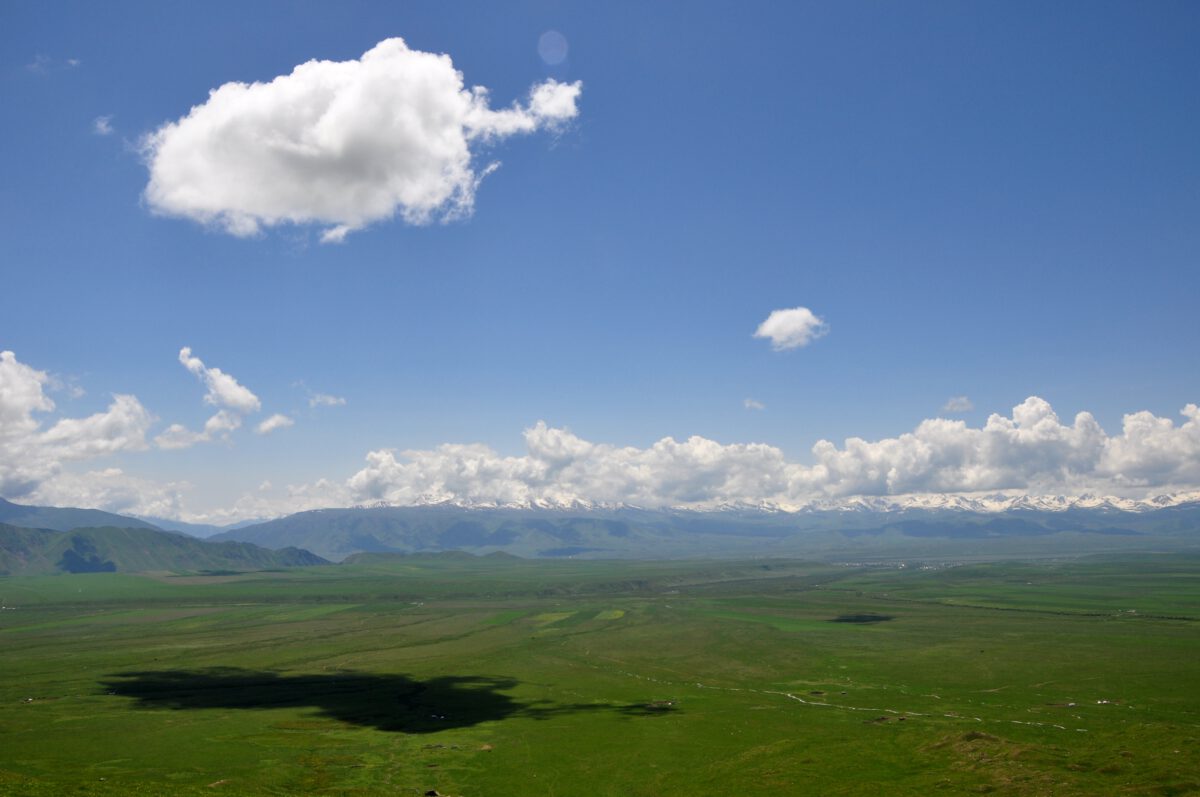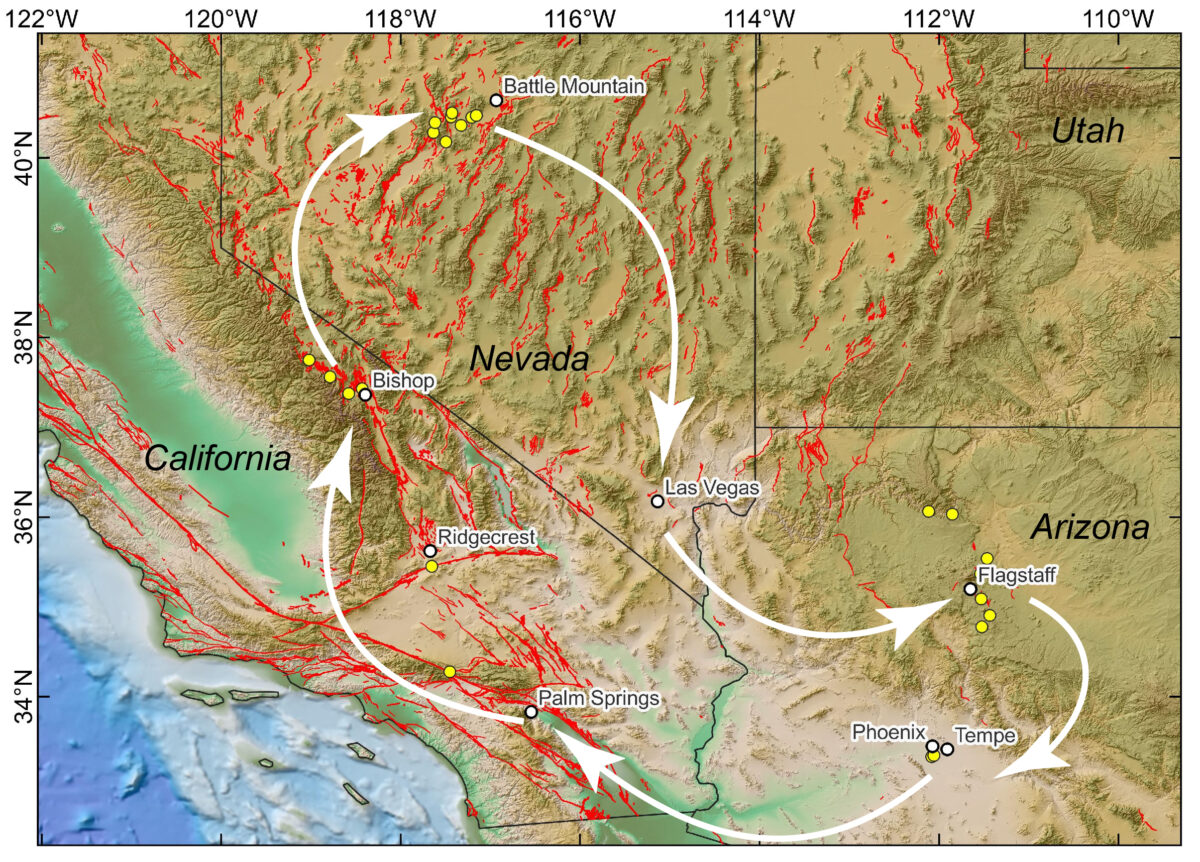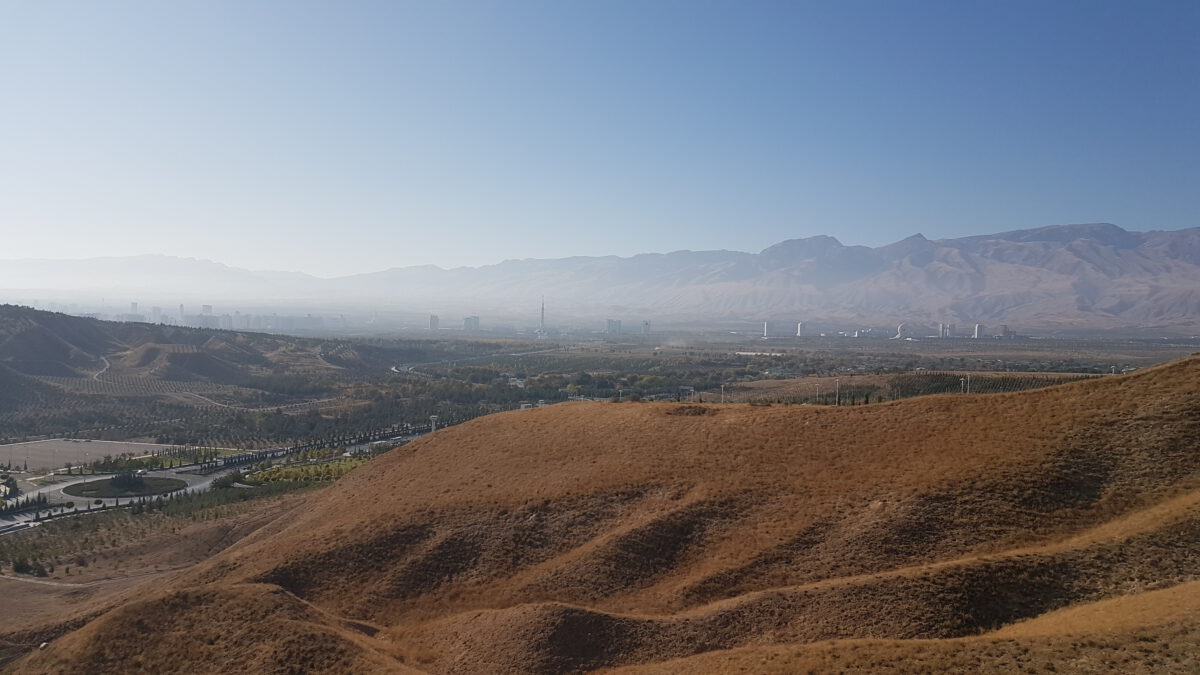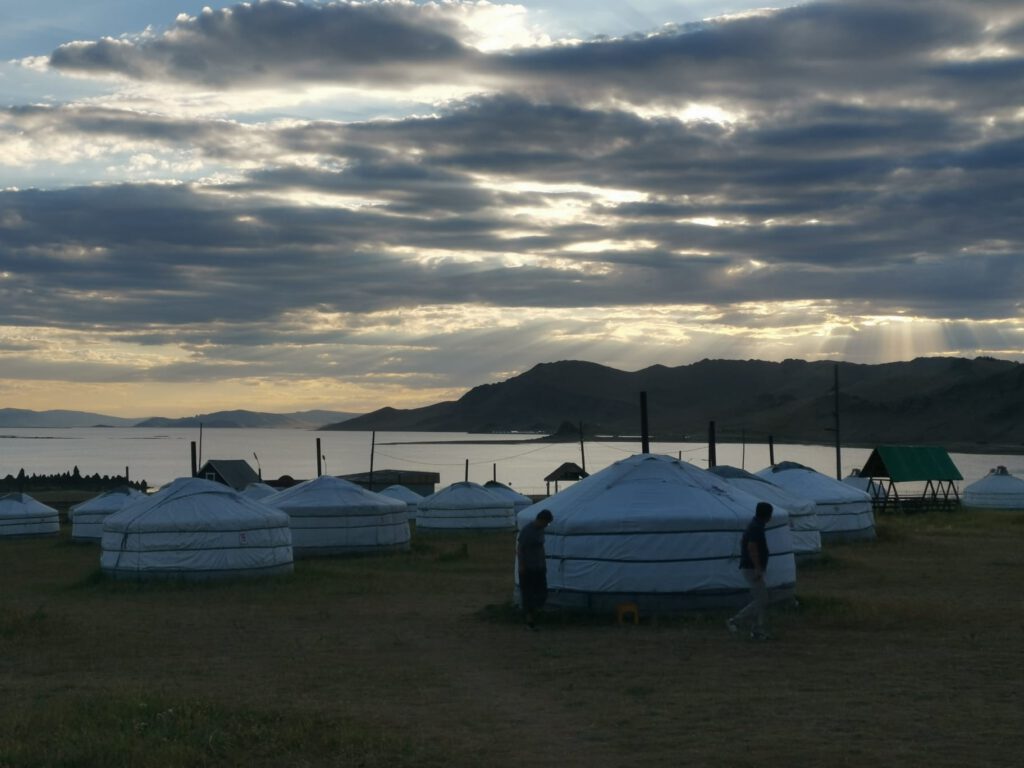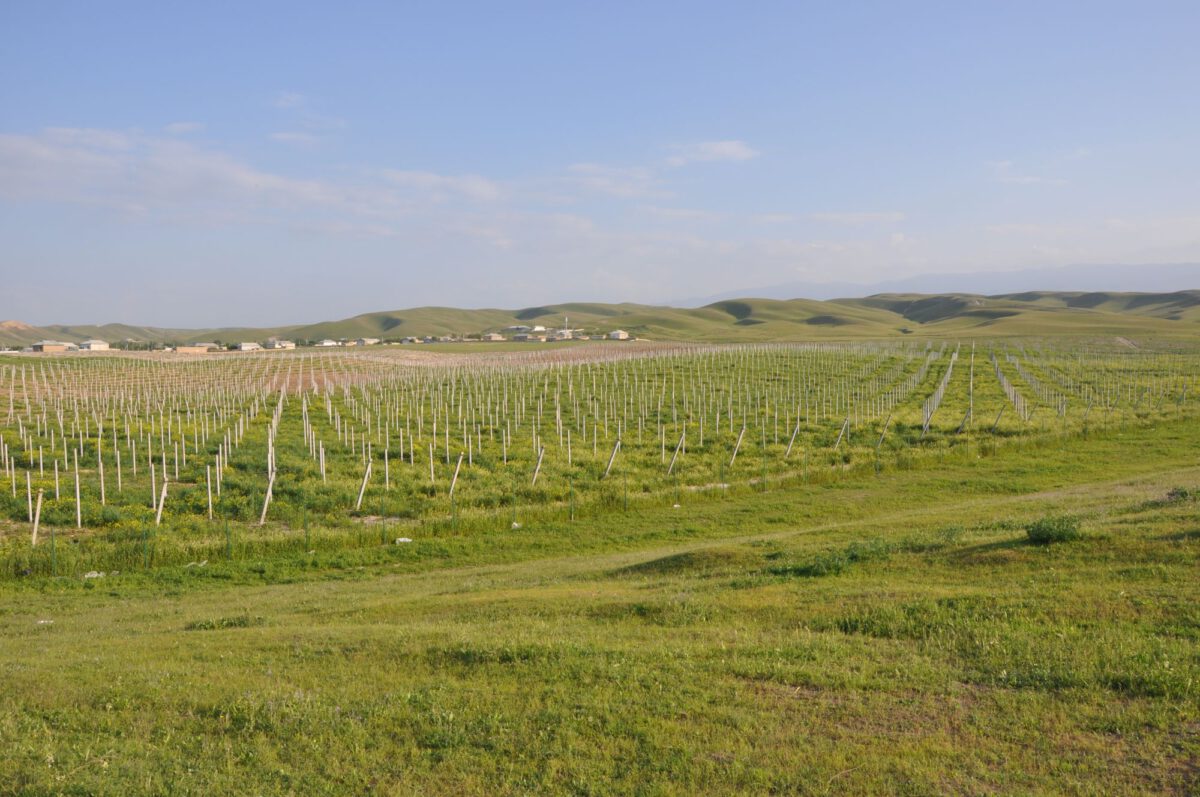
As part of an ongoing programme funded by the UK FCDO we undertook a field workshop in Kazakhstan, 10-20th November, which had the aims of 1) Provision training in making field-based earthquake geology observations, 2) Providing a forum for discussion of national priorities and networking, 3) Looking for opportunities for further work in the central Asian countries related to active fault mapping and characterization, and means of identifying and monitoring regions of landslide hazard.
The workshop took place in Saty, near the Kolsai national park. This is also the epicentral zone of the magnitude 8+ 1889 Chilik earthquake, and we were able to spend much of our time out in the field, gaining experience of mapping and site selection, surveying with drones, paleoseismic trench interpretation, and sampling for a range of quaternary dating techniques. We combined the field activities with analysis of the data, formal lectures, and conference-style presentations.

